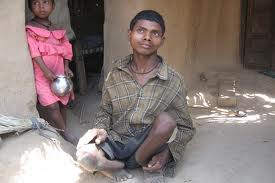The century-long drinking water problem associated with high flouride contamination still persists in an alarmingly high number of 14,132 habitations in 19 Indian States, found the Union Health and Family Welfare Ministry.
High levels of fluoride contamination affects the teeth and bones and in the long run it leads to symptoms of skeletal fluorosis with abdominal pain, excessive saliva, nausea, vomiting, seizures and muscle spasms. People come to know about it only after 10-15 years when the bones show deformity, when the thickness of the bone, causes stiffness of the spine. It is more visible in growing children below 15 years, according to experts.
Urging an immediate focus on the Drinking Water and Sanitation to go with the Prime Minister’s “Swachch Bharat” campaign, the health ministry said ensuring the supply of safe drinking water in these habitations will solve the problem.
While desert-ridden water scarce state of Rajasthan naturally tops the affected states with the highest number of 7,670 habitations with 48,84,613 people, Telangana comes second with 1,174 habitations of 19,22,783 affected people.
Karnataka too has 1,122 habitations followed by Madhya Pradesh with 1,055. Assam, Andhra Pradesh, Bihar, Chattisgarh, Maharashtra, Odisha, West Bengal and Uttar Pradesh too fall in the category of high flouride contamination.
The standard set by the World Health Organization for fluoride content in drinking water is 1.5 mg per litre, while 0.8 to 1.2 mg per litre will maximise benefits and minimise harmful effects and the environment and chemical form of the drinking water too affects the local levels of flouride consumption for the body.
Several WHO studies in the past have cautioned against high levels of fluroide in drinking water at 1.5 mg per litre or above. It causes pitting of tooth enamel and deposits in bones and very high levels at 10 mg per litre or above leads to the crippling skeletal fluorosis, it warned.
The Indian government has long been working on the issue and even started the National Programme for Prevention and Control of Fluorosis in 2008-09, which was merged with the National Rural Health Mission in 2013-14 covering 111 districts so far. Even the Indian Council of Medical Research has aken up the task of tackling the fluorosis.

